Vern, custodian of the Universe is the strangest, most creative and surreal graphic novel since Neurocomic. It also echoes the sentiment from the classic Peggy Lee song, “Is that All There Is?”, and parallels to Janet Jackson’s “What Have You Done For Me Lately”, which was certainly more about relationships, but could be extrapolated to a greater sense. Vern deals with the multiverse, and before you dismiss this smart graphic novel as merely jumping on the bandwagon that movies have mercilessly pounded into the ground, hear me out. This graphic novel accomplishes readers getting interested in it by successfully and entertainingly melding so many areas of a science-fiction venn diagram some readers might not know what to focus on. They’ll come for the trope of the multiverse, but get sucked into the art, check it out for the art, but then dig deeper into the STEM or one of any other possible paths.

Vern, Custodian of the Universe is not a metaphor. He’s a young adult who, due to unemployment is forced to move from California back home to Florida to live with his mother and grandmother. His grandfather died a couple of years earlier, yet his grandmother still actively refers to him as if he’s there and able to interact with the family. She also has connections at a local factory, Quasar, and has arranged for a job interview there as the janitor. Surprisingly, without much effort, he gets that job at the factory and is thankful for the job, but also curious about what they do there.
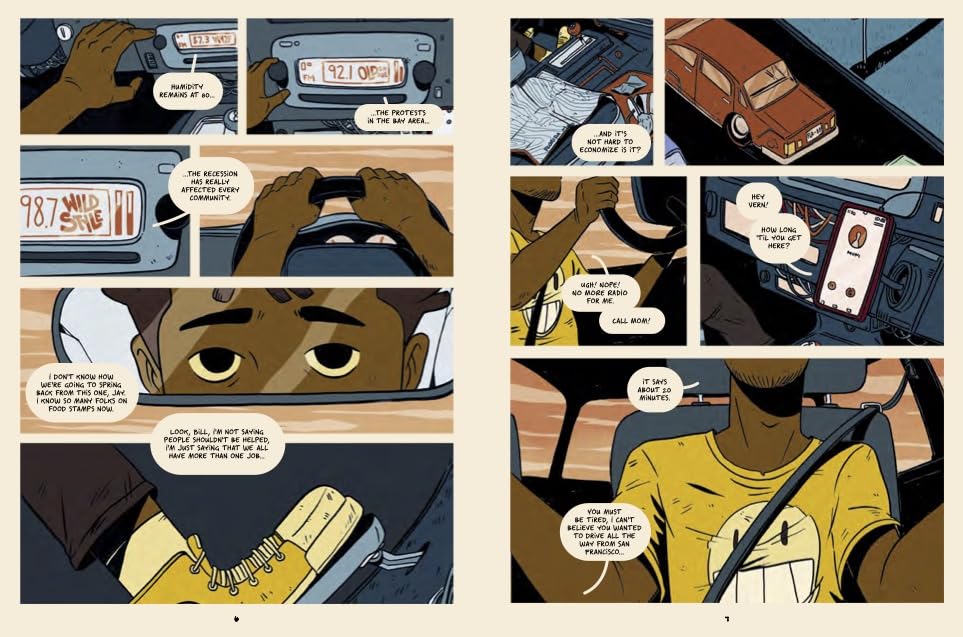
His supervisor is nice, but curt and simply tells him to take the bucket and mop to whatever room he’s asked to go to. As he leaves the custodian closet he sees a sign on the wall that say something along the lines of “being a custodian is the savior of the universe.” Vern attributes this to someone simply being fanatical about their job, until he’s called in to clean up his first assignment.
He enters a room with a couple of eyes on the wall and the floor appears to have plasma from corner to corner. Vern was told that his job is to mop things up, so he puts some elbow grease behind the mop and gets to work. To his surprise, the muck disappears and he’s quickly summoned to another room that’s even stranger. It’s in one of these rooms where he discovers an appliance is unplugged, thinking that someone must’ve done it accidentally he plugs it back in.
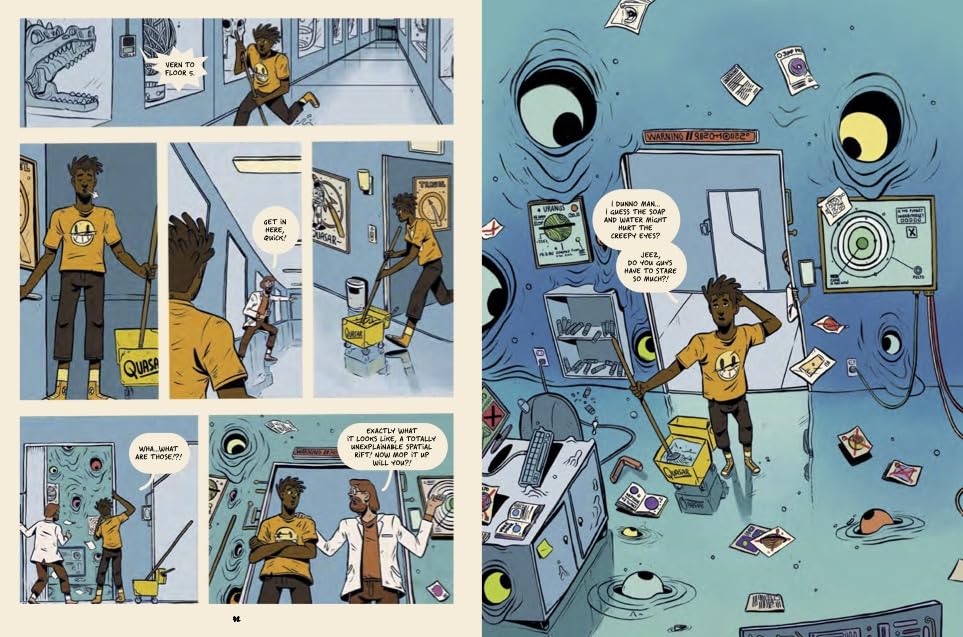
Once he does that he’s sucked into the furthest point in space and encounters the void. This mysterious humanoid shape is outlined by stars and only has eyes for its facial features. The two have a very short conversation where the void simply asks Vern, “What is the point?” This sucks Vern back to a point that he thinks is his work, but quickly learns that the fate of the universe is in peril because of the things that he’s seen and done.
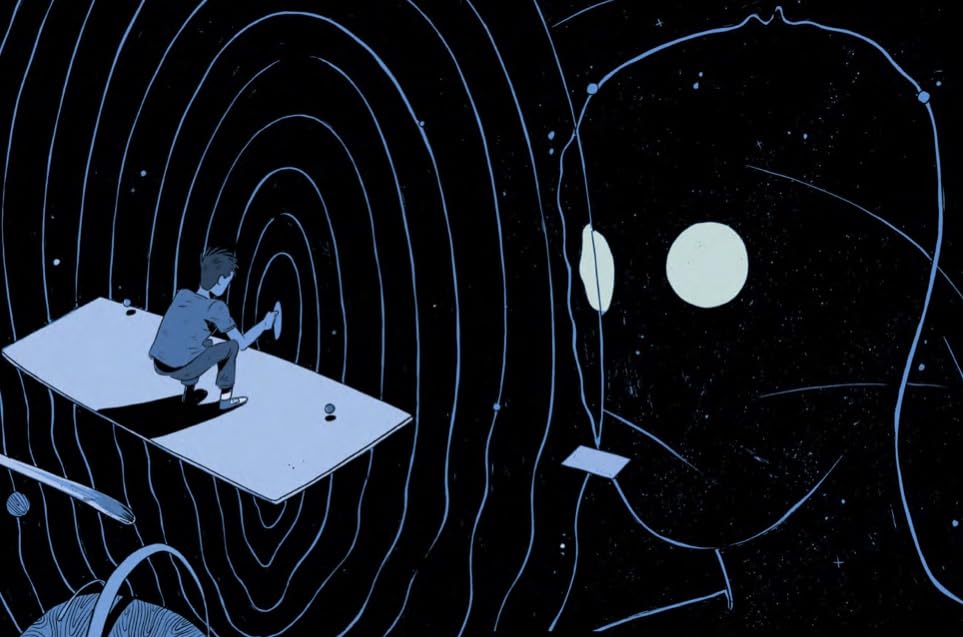
The preceding three paragraphs happen in the first third of Vern, Custodian of the Universe. It’s a graphic novel that makes the multiverse fun again in a very science-fiction way that’s imaginative, wildly creative and comprehensible for middle school readers and up. Its focus is on the fun of the multiverse, with a side eye glancing at the Butterfly Effect possibilities of it all. This is also a graphic novel that will leave some potential readers shaking their heads as they put it down after trying to understand it. For most kids, portals and dealing with multiple dimensions is second nature and that audience will enjoy the trippiness of the book.
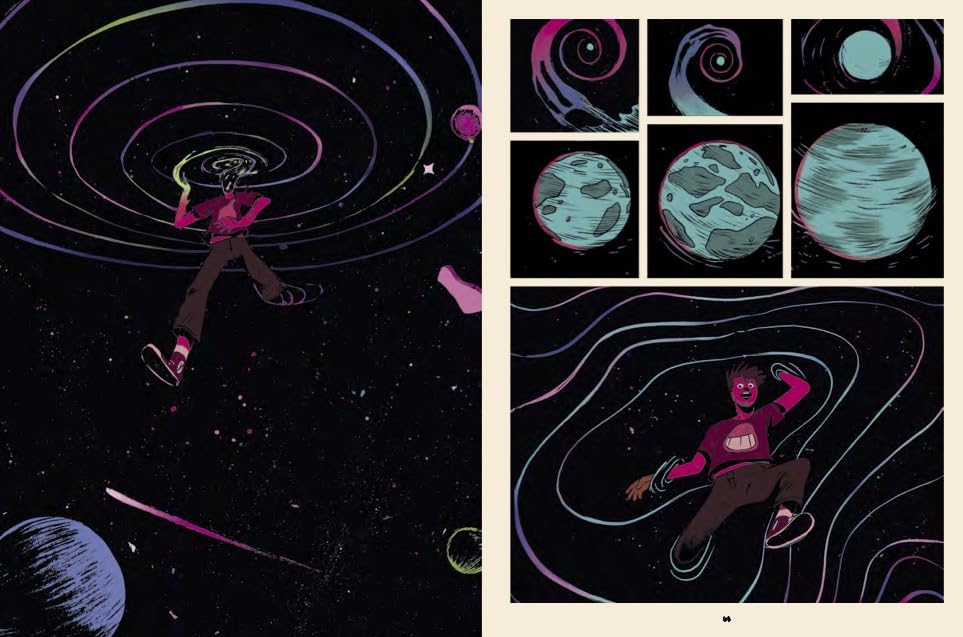
If the reader is someone who often gets lost in movies, has trouble following the plot of an hour-long television show or isn’t already a fan of science-fiction the book might confuse them. The gorgeous art will draw in some readers who enjoy the M. C. Escher appearance of the illustrations. They may not know that artist yet, but the bleeding together of images and the distortion of reality will make them want to seek out things that look like that.
When you combine those characteristics, with the creativity that Tyrell Waiters put into the story you’ve got a graphic novel that joyously goes off of the rails when it needs to, but focuses the story in time to be resolved. The details in the illustrations are rabbit hole worthy and will reward those curious readers with grins that aren’t obvious. There’s also a great sense of mystery throughout the book that operates on two layers. It’s a bit of a fake out because one of them seems very obvious, but the other one might be the deeper answer that resolves the question that the void was asking.
What is the point? It sounds so fatalistic and glib, but when it’s posited by an intergalactic orb that doesn’t have a physical presence, it’s more like a line from your favorite song that makes you think. You might wonder about the possibilities of slightly different actions, minute changes to see if the alter outcomes or perhaps really understand the ending to The Family Man. Ultimately, I think it’s a combination of those three that are the point of Vern, Custodian of the Universe.
It doesn’t specifically ask big questions, because the graphic novel is based in science-fiction. However, its possibilities are limitless, which makes the graphic novel so intriguing for some and difficult to comprehend for others. To the latter I’d say, take the metaphorical blue pill and see what’s down the rabbit hole. Your initial confusion and resistance is natural, but deal with it for a moment and you’ll discover the fun that can be had when you settle down for the ride.
Vern, Custodian of the Universe is by Tyrell Waiters and is available on Nobrow.
There are affiliate links in this post.

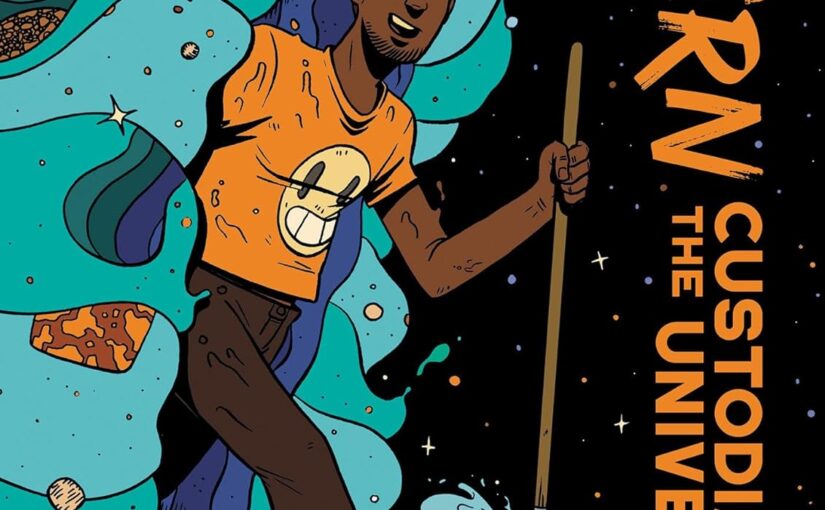



 Facebook
Facebook Twitter
Twitter Flickr
Flickr GooglePlus
GooglePlus Youtube
Youtube